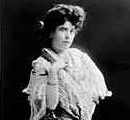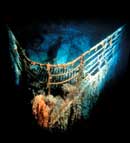
The Queen was born on 21 April 1926 in Mayfair, London.
Christened Elizabeth Alexandra Mary, she was the first child of the Duke and Duchess of York, Prince Albert and Elizabeth, who would later become King George VI and Queen Elizabeth.
Princess Elizabeth was born third in line of succession to the throne after Edward, Prince of Wales (later King Edward VIII), and her father, The Duke of York – it was not expected that she would one day become Queen.
In 1930, Princess Elizabeth’s sister was born, Princess Margaret Rose. The two sisters were educated at home under the supervision of their mother, and enjoyed a relatively peaceful and happy childhood.
Whilst Elizabeth was still a young girl, she unexpectedly became first in line to the throne … the ‘heiress presumptive’ … and public interest in her life began to grow.
Main Image: Princess Elizabeth, aged exactly one year. The picture was made as the baby princess was taken for a ride in the grounds of Windsor Castle, she is seen with her cousin, the honourable Gerald Lascelles (son of Princess Royal). (AP-Photo) April 1927.
The Queen's Diamond Jubilee
Join in the festivities in London in 2012 as Her Majesty the Queen celebrates her Diamond Jubilee, marking 60 years as Britain's monarch.
Four-Day Jubilee Weekend
To mark the Diamond Jubilee, the UK government is planning a four-day Jubilee weekend.
This will include moving the last May bank holiday to 4 June and adding an additional bank holiday on 5 June.
So you've got even more time to celebrate!
Diamond Jubilee: 60 Years as Queen
The Queen came to the throne on 6 February 1952 but her official Coronation didn't take place until 2 June 1953.
The Diamond Jubilee marks 60 years of the Queen's reign. The Queen is the only British Monarch to celebrate a Diamond Jubilee, other than Queen Victoria in 1897.
The Queen celebrated her Silver Jubilee (25 years) in 1977 and her Golden Jubilee (50 years) in 2002.
Former prime minister Sir John Major will chair the grant-making body, which will focus on areas such as fighting curable diseases and the promotion of education and culture.
The Queen is known to be supportive of the Trust and its ambitions and pleased that it will have a broad Commonwealth focus.
Like the previous Silver Jubilee Trust, it will be independently run with charitable status.
The Trust will receive money from Commonwealth governments, but people will also be able to make private donations to the cause, as will businesses and other organisations.
Sir John said the Trust would provide a "lasting legacy" in the Queen's name.



















